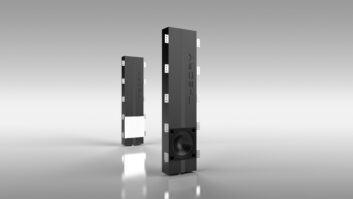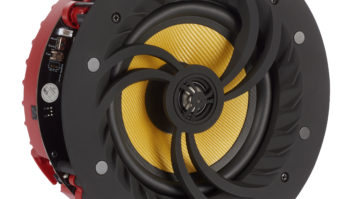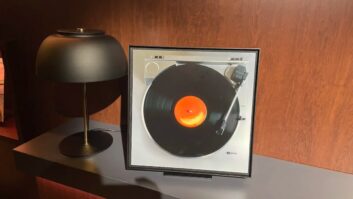NEW YORK – The car electronics aftermarket declined this year in units and dollars despite the quickening pace of technology changes that provide a growing opportunity to sell new technologies lacking in factory systems that are only a few years old.
Next year, however, things could be a little better as more sales shift to 12-volt specialists, potentially driving up average selling prices (ASPs).
Those were some of the key takeaways mentioned by a group of car electronics suppliers questioned via email by TWICE on the state of the industry in 2013 and forecasts for 2014. Here’s what the panelists had to say:
SALES PICTURE
TWICE:How did the combined mobile audio, mobile- AV, and navigation aftermarket fare in 2013, and what is the outlook for 2014?
Keith Lehmann, Kenwood executive VP and JVC Mobile Entertainment senior VP: We saw, for the first time, an industry decline in overall unit volume along with lower revenue and lower averages selling price (ASP). This proves that we can’t discount our way to prosperity. We need to promote value and the user experience. Regarding the outlook for 2014, we expect more business to be driven through the specialist retail channel, and thus ASPs should stabilize as the result of the sales of higher ticket items.
Tom Malone, Audiovox Electronics president: Looking at the category as whole, unit and dollar volume was down. For us, our multimedia category was flat, but we did see a slight uptick in sales once our newest units hit the market. We anticipate our growth to continue through 2014 because of new technology introductions in next years’ product line that will offer easy-to-use smartphone connectivity options for consumers. Our product focus will create a user experience centered around the use of apps in the dash and voice control. We are stepping up our efforts to upgrade factory systems by using the same technology with our OE integration products. These types of features in both in-dash and integration products will drive growth with relevant technology for consumers that want to use a smartphone in the car.
We see a move towards OE integration products that allow navigation to be added to factory radios with existing touch screens. These OE Integration nav modules are lower cost, have an ease of installation, and do not require the factory radio to be removed. We expect this OE nav integration category to have growth over the next few years as more companies transition to this category of business. This trend will begin to negatively impact OE-look replacement radios.
Ted Cardenas, Pioneer Electronics car electronics division marketing VP: 2013 has seen gains in several key mobile categories, led by in-dash A/V and Bluetooth- and smartphone-compatible products. The continued sales growth of smartphones in 2014 promises more of the same.
Augustin Leung, Clarion product planning director: According to CEA, January through October factory-level sales in the combined categories — mobile audio, A/V, navigation and speakers — were down 2.6 percent from 2012 year to date to $1.1 billion, down slightly from $1.136 billion.
SEGMENT STRENGTH
TWICE:What segments, features or price-point ranges posted sales gains in 2013 and will do so in 2014?
Lehmann: In-dash DVD, double- DIN CD and marine were strong categories in 2013. Bluetooth-enabled CD models were very strong, particularly at the entry-level, as more endusers choose to stream audio over Bluetooth. Android smartphone connectivity showed a big gain, in 2013 and we expect this to continue in 2014.
Malone: Under our Jensen brand we recently offered an all-new aftermarket entry-level in-dash navigation multimedia head unit for $399. We see great promise in sales with this unit and will continue to build on this head-unit platform with more new models through 2014. At this price point, we have seen the product resonating very well with our loyal Jensen customer base and attract new customers to the Jensen brand.
We see growth in multimedia head units that offer the consumer the ability to more safely use apps on their smartphone in the car. For 2014 we are introducing the ability for consumers to run apps in the dash with new multimedia head units. This new capability addresses the fact that new apps are being introduced all the time and consumers want to be able to use apps easily and safely in the vehicle.
Our amp and speaker sales remained flat for this year and as a result, we had to become creative and initiate an all-new brand and product partnership that brings new life to our Jensen speakers and amps. We are working with a well-established automotive lifestyle brand that has brand recognition in market segments we have no presence in, and we expect this will help stimulate amp and speaker business and drive our growth for us in 2014. This exciting new product will be announced on Jan. 6.
Leung: 1.5 to two-DIN in-dash CD players posted units sales growth of 51 percent and dollar growth of 41 percent year to date through October. Mechless head units were up 18 percent in units yet down by 11 percent in dollar shipments.
In-dash monitors were up 5 percent in units and down 5 percent in dollars. In-dash monitors were up 6 percent in units and down 6 percent in dollars. Fixed in-dash navigation units were up 51 percent in units and 34 percent in dollars.
The speaker category overall was up 2 percent in units and 2.3 percent in dollars.
TWICE: Is the quickening pace of technology giving the aftermarket a growing opportunity to sell new technologies into cars that might be only a few years old?
Lehmann: Absolutely, but this is highly dependent on the quality of the way we promote this to consumers and how well we demonstrate these technologies in-store.
Malone: The fast pace of technology developments is a challenge for all companies in the industry. However, these new technologies also provide unique opportunities for the dealer. Today’s customer base is more tech-savvy than ever before and follow trends in mobile devices very closely and expects new product introductions to allow for these trends to carry over into the vehicle. Some examples of technology we are involved in are in-line with the technology trends in the market. We offer OE integration modules to upgrade factory radios with hands-free voice control of music, navigation apps and even texting with Siri-enabled iPhones or Google S Voice-enabled Android phones. We also offer a Qi wireless charging cradle for the car.
Another area that is evolving is traditional rear-seat entertainment The RSE category continues to change as more and more consumers are bringing handheld devices into the vehicle. We are creating a solution, eHub, that will allow the movement of content in the vehicle via Wi-Fi from smartphones or tablets to multiple screens in the vehicle. This solution will also push content saved in its hard drive to a handheld device or tablet and embedded screens.
Cardenas: Smartphones and the consumer’s desire to maintain compatibility with their latest device or mobile OS will continue to provide opportunities for the aftermarket. This consumer demand affects practically all vehicles since the smartphone and mobile OS evolve so rapidly.
Leung: Yes, absolutely. There are still opportunities for selling aftermarket product to new-vehicle owners also who may have a lower trim level that didn’t include all the technology perks.
SMARTPHONE CONNECTIVITY
TWICE:Did we see more emphasis in 2013 on connecting Android phones to head units to control and play back the phones’ music libraries and other apps, and will that grow in 2014?
Lehmann: There was a larger push toward Android connectivity in 2013, and this was due to better Android-based phone availability and the consumer move away from iPhones due to cost. Many salespeople are moving toward Android smartphones for in-store demonstrations because they see more of their customers carrying them.
Malone: As Android-based smartphones continue to grow share, there is a greater need to ensure that Android connectivity is solid for in-dash head units. The Android OS platform prioritizes A2DP and AVRCP for Bluetooth streaming of audio content. Their only wired-connection specification is Mass Storage Mode with USB, but this feature is not enabled in all Android phones. Giving the consumer a good experience for more sophisticated command and control of content libraries is not part of the current spec. Until Android releases a build-to spec, this will be a problem.
Cardenas: As more consumers shift away from physical media like CDs and digital media players like iPods toward consuming their multimedia through their smartphones, there is growing emphasis on compatibility with all smartphones on mobile OS types, Android included. This shift will definitely grow demand for access and control of the media stored on the smartphone as well as control of apps and services that stream multimedia content from the Cloud. This demand will produce more SKUs that offer this access, regardless of connection type.
Leung: Yes, we have more emphasis in being able to connect to Android phones to play music. This is largely prompted by the introduction of Android 4.0, which is required for the feature. All of our 2014 A/V stations and AVN products are capable of controlling Android devices via folder/file control. Unfortunately, the ability to control the music like an Apple device resides solely on the Android platform’s growth and development. Clarion would like nothing more than to be able to have complete search capability and music catalogs organized in that fashion automatically.
Our goal is to offer the same capabilities in a wired and wireless connection. For example, Apple now has iPod by Bluetooth, which allows access just as if the device were connected to the head unit by USB.
TWICE:Have suppliers and retailers been able to accurately manage expectations when explaining the greatly varying capabilities of head units with varying levels of control over Android and iOS devices and their apps?
Lehmann: Consumers expect seamless integration and a similar experience as they get with their smartphones, which is a challenge given the different device platforms and ongoing software upgrades. Suppliers need to manage information to the field better, and retailers need to educate themselves on new smartphone models so they are not caught off-guard with a customer.
Malone: Dealers are focusing more on re-educating their sales force to pitch more connectivity-application- based integration and content, not just pitch audio-based products. This is a trend we must see continue if we want the mobile market to grow and capitalize on the changes that consumer want solutions for in the car.
Cardenas: Smartphone compatibility is such a broad term with so many different solutions and options. For the most part, the industry has been able to meet the expectations of the consumer. However, the industry’s real potential for growth is to educate the massive base of smartphone users of how much more is possible by connecting their device to their car using an aftermarket solution.
TWICE: How has demand fared for head units that control and display iPhone content and apps, such as navigation, following Apple’s switchover to the Lightning connector?
Lehmann: Demand is still strong, and capable retailers support adapter sales as long as the pricing is reasonable and delivers acceptable margin. Apple’s control over many Lightning adapters continues to frustrate retailers that cannot offer complete solutions to their customers. We have seen the move to Wi-Fi in our industry, and it stands to reason that this will continue.
Malone: The key issue is the Apple policy for passing video signal from the iPhone. Lightening changed the rules for video by switching to a digital video protocol. Getting video content into the dash is a tricky safety issue because it is difficult to control what is useful, like navigation maps and turn-by-turn graphics display, from what is dangerous, like movies or live TV.
Cardenas: Although demand has been strong when compared to traditional aftermarket head units, this still represents a very small percentage of the total number of smartphone users. Although the various wired and/or wireless solutions are currently complicated, the consumer’s desire to access smartphone apps and services through their dash is likely to grow exponentially. This demand will drive manufacturers to offer less-complicated connectivity. Bottom line, regardless of the specific technology used, the consumer will expect a simple-to-use solution that just works.
Leung: The Lightning connector introduced a mild roadblock for most mobile electronics manufacturers and the industry as a whole. The main change of being all-digital made it difficult because previous products all operated on analog audio and video inputs from the 30-pin dock connector. Being able to accept a digital signal was a new feature, which required significant technology and development. Now that the Lightning-to-HDMI adapter can be used with Clarion head units, this is no longer a problem and is easily solved with commercially available accessories. Wi-Fi Direct is an option; however, it is not supported by older products, and the additional cost of that module could be a burden to the consumer at this time. Perhaps in the future, more cost-effective components will become available to allow for this option of connectivity.
FUTURE CONNECTIVITY OPTIONS
TWICE: Is Wi-Fi Direct or higher-speed Bluetooth the answer to the challenges of connecting smartphones (iPhones as well as Android) to head units to control smartphone functions and apps and play back and display their content?
Lehmann: This depends on the bandwidth and resolution needed for the user’s content of choice. While Bluetooth has speed and compatibility profile limitations, Wi-Fi is a universally compatible format that has tremendous potential as a connectivity solution in the future.
Malone: The challenges are two-fold, and there will never be one answer. First is connecting the smartphone, and second is displaying the content safely on an in-dash screen. The key issue is the standardization and adoption of the connection platform that can be ubiquitous across smartphone devices and in-dash units. We believe that no single standard will be adopted by all the players in the ecosystem. Wi-Fi Direct holds great promise, but Apple has its AirPlay platform, so there is the need to have at least two standards for connectivity.
Cardenas: Both these technologies as well as other candidates certainly have potential as viable smartphone connectivity options. For the head-unit manufacturer, material cost, engineering resources, bandwidth, power consumption and other variables must be weighed when evaluating any communication protocol.
OEM-INTEGRATION HURDLES
TWICE: How well has the aftermarket coped with the challenge of integrating aftermarket radios with OEM databus systems?
Lehmann: There are already multiple solutions on the market, some of which are better than others. The challenge here is that there are very few proven ways to present and demonstrate these solutions in-store, which is necessary to impress low-tech consumers. Suppliers and retailers need to work together to find ways to promote and demonstrate this sophisticated integration approach.
Cardenas: Overall, the OE’s continued trend of using the radio display to broadcast vehicle information will increase the demand for integration with aftermarket head units. Regardless, the OEM databus system is actually nothing new for the aftermarket, and the multitude of third-party solution providers that have been dealing with various physical and electrical challenges in cars for decades.
AFTERMARKET NAVIGATION
TWICE:How did aftermarket in-dash navigation sales hold up in 2013?
Lehmann: There is clear evidence that connected smartphones have had a negative impact on consumer preference toward in-dash navigation. This category, however, still has relevance in the industry from the standpoint of dealers needing a true flagship product to sell. Plus, the user experience is much better using the larger in-dash screen, and issues that are smartphone-specific, such as decreased battery life and increased data usage, become irrelevant.
Malone: As more consumers expect phones to render their displays on in-vehicle screens, there will be a strong segment that will still want resident in-dash navigation, whether as part of a new vehicle or aftermarket system. This segment wants the full onscreen interaction you get from embedded navigation vs. just having a navigation map displayed on a screen and relying on the smartphone for functionality. The new OE integration navigation modules fulfill this demand and give the consumer the functionality and experience they want from an embedded navigation system.













